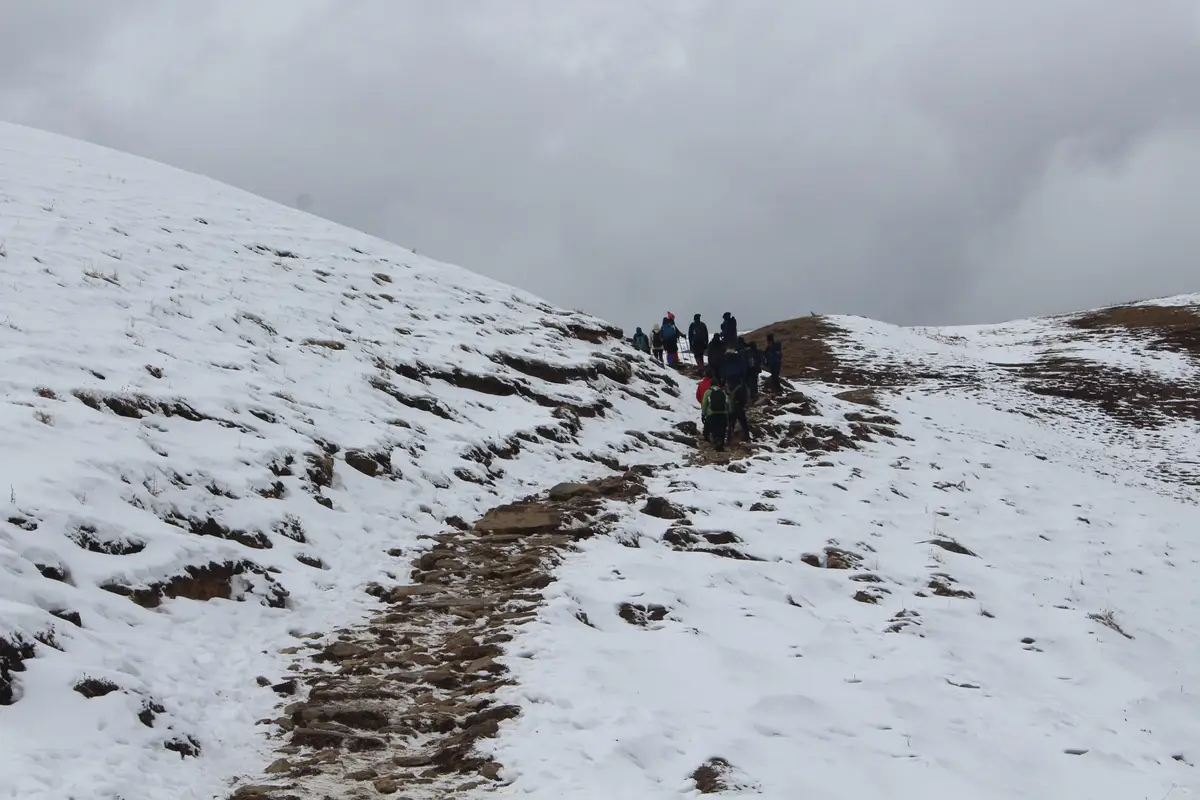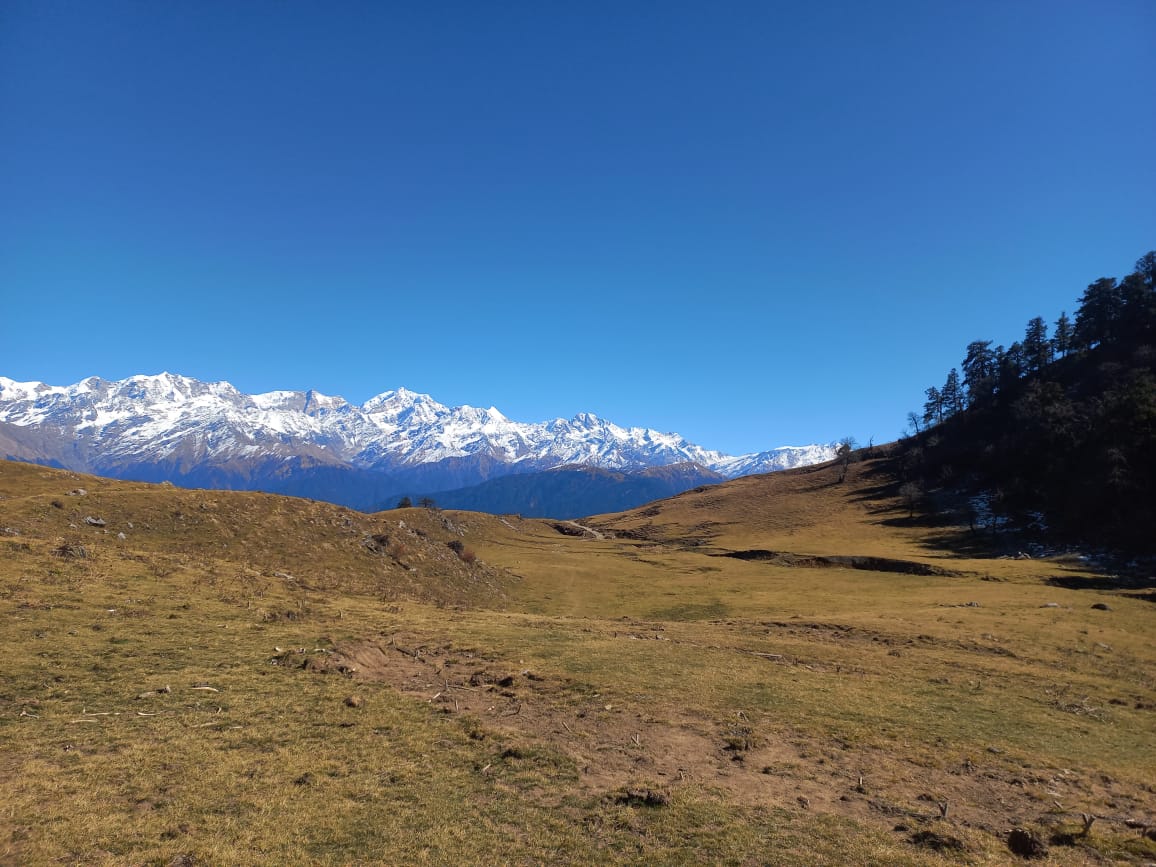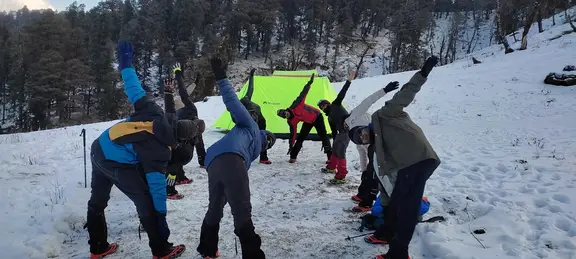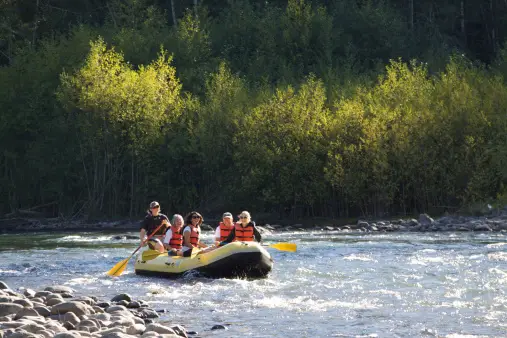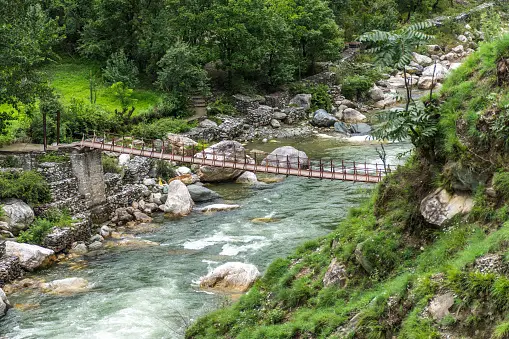Stay in Shape for your Next Trekking Adventure with these Home Exercises
Had it been the same as taking a walk in the garden or in between the greens of the woods, “hiking” would most definitely not interest you in reading this article. But if you are pretty much certain about leaving for a hike you might want to get ready!
Some activities have certain requirements to prepare you for the best experience. Just like that hiking falls under the category of activities that requires you to be fit enough. Here are some musts that are the fastest way to get in shape for hiking. Though a lot of people consider hiking as an exercise itself for hiking, it’s only half true, you need way more than that.
So how do you prepare for a hike physically? Here are a few points that you should note down for starters:
Well initially, it is recommended that you must start exercising 10-12 days before you leave for hiking.
While starting the session please do keep in mind how important it is to warm up before any exercise you do.
Cardiovascular activities are one fine way to boost your stamina. Activities like swimming or running raise your heart rate and give you an all-over physical improvement.
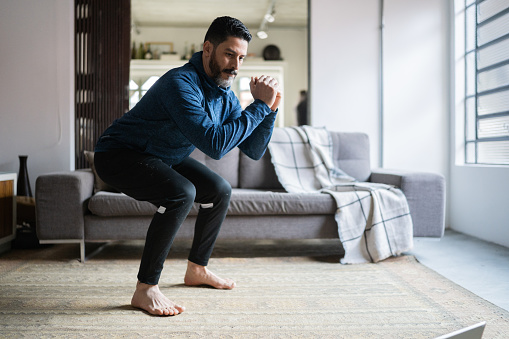
Take part in resistance training and build your strength.
Stretch it out! While ending the session, calm your body down and just do a few stretches which will help your body get back in its state.
To train for elevation gain hiking, running uphill is highly recommended but downhill is important too. Improving muscular strength is a must in this case. For the improvement of cardiovascular activity be sure to max out VO2 (the rate at which the oxygen is carried by the blood). If you can’t find a hilly region that’s fine, just take the stairs! Run up the stairs (without hurting yourself, please) or if you are going for the hills pick a steep one.
You may also like : Why Do My Hands Swell While Trekking?
While working out on steep terrain, allow yourself a short five-minute break with very slow and long lunges. An hour, once a week of this excellent training exercise for hiking is just perfect.
Now fellow trekkers, get ready for some HIIT workout for hiking. Before you get frightened and back out, know that this is worth it and not only for trekking. Exercising an hour like this will provide you with agility, energy boost and refreshment all of which will allow you to make the most out of a day and make you feel alive!
Let's look at these core exercises for hiking!
During the session of HIIT workout for hiking, the clothing type should be tight but comfortable.
You may also like : Tips for a good night sleep in the tents while trekking
Warm-ups (give it no more than 5 to 10 minutes):
- For a nice warm-up, let’s stretch it out. HIIT workout is pretty intense so it is a must to stretch.
- Jumping jacks is another extremely helpful move for a warm-up session.
- Walking jacks are also recommended.
- Ending with swinging toe touches, leg swings (forward and side to side) can do.
1. Crunches:
For crunches, on your back, lie down and put your feet, hip-width apart on the floor. Kneel and cross your arms across your chest. Don’t forget to inhale while contracting your abs. Crunches, one of the core exercises for hiking, help you build abdominal muscles. That’s right, this exercise works for them with six-pack abs!
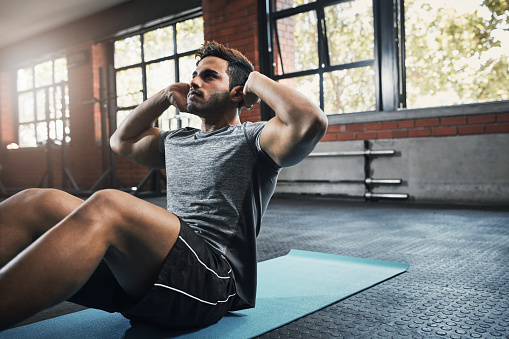
2. Sitting Lunges:
Sitting lunges is another great hiking exercise. For sitting lunges sit up straight, shoulders back and down. Inhale as deeply as you can and clench your glutes and exhale as you let go. Feel the strain in your hip flexors and thighs as you squeeze. Lunges work on leg muscles like the gluteus maximus, hamstrings, quadriceps and calves.
3. Reverse lunge with a knee lift
To do a backward lunge, contract your core first. Now step back slowly with one leg until your back knee almost touches the floor. Same as sitting lunges, reverse lunges focus on the gluteus maximus, hamstrings, quadriceps and calves.
4. Planks
Moving on to planks, lie facing downward. Just bend your elbows and drop to your forearms. Make a fist with both of your hands with your forearms and keep them parallel to one another. Planks can help you with a healthy posture, balance, flexibility, metabolism, body alignment and even mental health. Therefore, planks can surely be added to the list for a beneficial home workout for hiking.
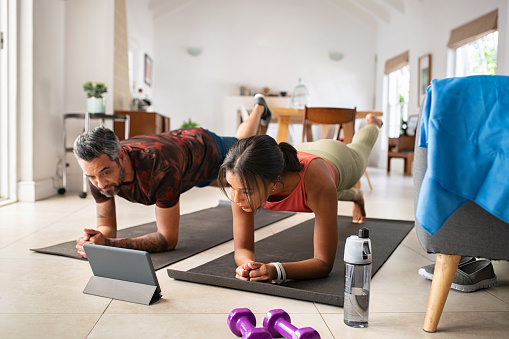
5. Side planks
For side planks, when your chest is on the sidewall, check to see if your hips are too low or too high. By addressing the core, you can keep them centred.
6. Curtsy lunge
Stand with your feet side by side, shoulders back, and your right leg dropped to the side. Press up and stretch with equal weight on both feet on the opposite side.
7. Cobra pose
For a cobra pose, lie down facing downward and keep your hands directly right beneath your shoulders, slightly outside. Now press the tops of the feet down, keeping the legs active. This trekking exercise focuses more on your shoulders.
8. Cat cow pose
While doing a cat-cow pose your hands should be shoulder-width apart, and your knees should be precisely below the hips. Inhale deeply while you arch your lower back and raise your head, your pelvis tilted up like a "cow." Exhale deeply, arching your spine and lowering your head and pelvis like a "cat." Being another one of the most beneficial and core exercises for hiking, it improves posture and balance.
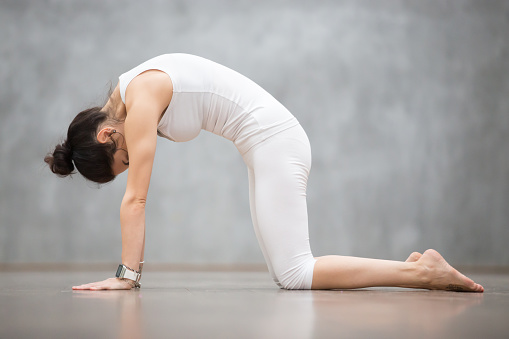
9. Downward facing dog to leg raise
For this hiking exercise, firstly raise your right leg off the ground behind you while you inhale. As you elevate the right leg, keep your hips level with one another. Lower the left heel to the ground. Extend from the top of your head to the lifted right heel. This increases blood flow and improves circulation.
10. Leg curls
While doing leg curls your feet should be hip-width apart. For balance, place your hands on your waist or a chair can do. Bend your knee slowly and move your heel toward your buttocks. Do maintain parallel thighs. Gradually, lower your foot. This hiking exercise primarily works on hamstrings.
11. Standing Glute Squeeze
For standing, glute squeezes, with your feet hip-width apart, toes forward, and knees slightly bent, stand comfortably. Keep your shoulders back and your abs in. Hold your buttocks for three seconds while slowly squeezing your glutes. For one complete repeat, slowly release the action completely.
Apart from these exercises, activities like walking or running on the sand are very helpful for building your muscles.
How and Why is Cardio Beneficial?
What is cardio? Well if you are hitting the gym for the first time, cardiovascular activities are those exercises to try out for instance! Getting your heart rate up is one important thing to enjoy all the benefits that cardio provides. Jumping jacks, squat jumps, running, and jump rope, are exercises that can help. 10 to 20 minutes of cardio and change your life for good. How? Take a look.
- Weight loss: Cardio is a highly common and recommended routine for weight loss. It undoubtedly helps burn the fats and calories so add it to your list if you need to lose some kgs.
- Strong heart: As you can already derive from the term “cardiovascular”, these kinds of activities focus on your heart and blood cells. Activities like running, jumping or biking increase your heart rate and help blood pump properly and all that makes your heart stronger.
- Increased lung capacity: A lot of people seem to back off from cardio because of the shortness of breath felt while exercising. Actually, rather than harm, it’s a good thing! Yes, as you push yourself to breathe, your lung capacity is increasing.
- Boost energy: These kinds of activities boost your energy through enhanced endorphin secretion.
- Good mental health: As you read above, cardiovascular exercises increase endorphin secretion. This makes you feel fresh and good afterwards. Cardio routines help you fight depression and anxiety. They are also known for confidence boosts resulting from all those times you push yourself instead of quitting.
- Good amount of sleep: If you suffer from sleep deprivation and have trouble fixing your sleep schedule then cardio is a must for you. Cardio is highly recommended to get a good amount of sleep. At a reasonable hour, you will be tired enough from all the activities and this might help you sleep faster.
- Better immune system: Don’t you hate it when you get sick from absolutely nothing? Well, bacterias are faster than trains. Build an immune system that can outdo bacteria just like that in 20 mins. Just keep up the good work!
Train With Good Hiking Shoes and Backpack!
Feet play a very vital role in hiking. The movement of your feet needs to be practised as you need to get used to walking with such types of shoes. While trekking a good pair of trekking shoes is recommended. A backpack works very nicely as well. So pack your stuff, pull up your socks, and tie up your shoes! Do remember that this is for training so don’t be very harsh and tight with your shoes.
For a walk, just the boots can work. The sole purpose of this activity is to prepare you for hiking and let's be real, the trails can be challenging so make sure you are always comfortable in your shoes. Breaking into your hiking boots will result in a better fit and a longer duration of the product. About two to three weeks from your trip start breaking into the hiking shoes.
Another very popular way to stretch out hiking boots is using alcohol. Just take a tiny cotton ball, soak it with some alcohol and apply it to the areas of the boots where they feel light. All it needs is a few minutes to let the alcohol expand the material. This hack does work for stretching out boots but still, your training doesn’t stop.
While training uphill go for your backpack as well. This will help you deal better with the hard work you have to do while walking upward with a stuffed backpack. Two weeks before the trip, stuff your bag and make sure it weighs about 75% to 80% of the actual weight you will be carrying during your trip. This is how to train for backpacking. Which will make it less and less hard.
Use of Resistance Band, Push-ups, Pull-ups, and Free Weights Must be added For Advance Training
When you are thinking of better and fuller, there is surely nothing better than some proper equipment. The use of resistance bands, push-ups, pull-ups, and free weights are very helpful for advanced training. Resistance bands engage the stabiliser muscles, which are important because they support our larger muscles and joints while moving, lowering the chance of injury. As a result, they are a safe and low-impact choice for seniors, and they are frequently used for rehabilitation.
Your lats, mid-back, rear delts, biceps, forearms, and core are all engaged when you complete a pullup. Push-ups on the other hand strengthen the chest, shoulders, triceps, and core muscles. You've now covered the whole upper body with these two motions.

Low-impact training is another advantage of body-weight training. Resistance exercises provided by 'free' objects that aren't linked to anything and that you may pick up and move are known as free weights! Medicine balls, barbells, dumbbells, kettlebells, sandbags, resistance bands, and handbells are just a few of the tools available.
What to Eat?
Add a lot of proteins and carbohydrates to your diet! Foods like Oatmeals, eggs, meat, and peanut butter can do. Add a whole lot of hydrating fruits (such as cucumber, watermelon etc.) and other fruits (fibrous fruits, specifically) as well to your diet. Fruits contain natural glucose, so don't worry about the sugar. More than harm, the vitamins and minerals in fruits will get you going. Lastly, add a nice bowl of vegetables as it can make your diet healthy enough for a nice safe trip.
That’s exactly how to prepare for a trek! Even though hiking demands a lot of preparation, you know, we know, that it’s all just worth it. Among all these hard-working activities don’t forget to have fun as a hiking workout is definitely not a bad time as some people think of it. Squeeze all the fun out of it. Have a safe one!



